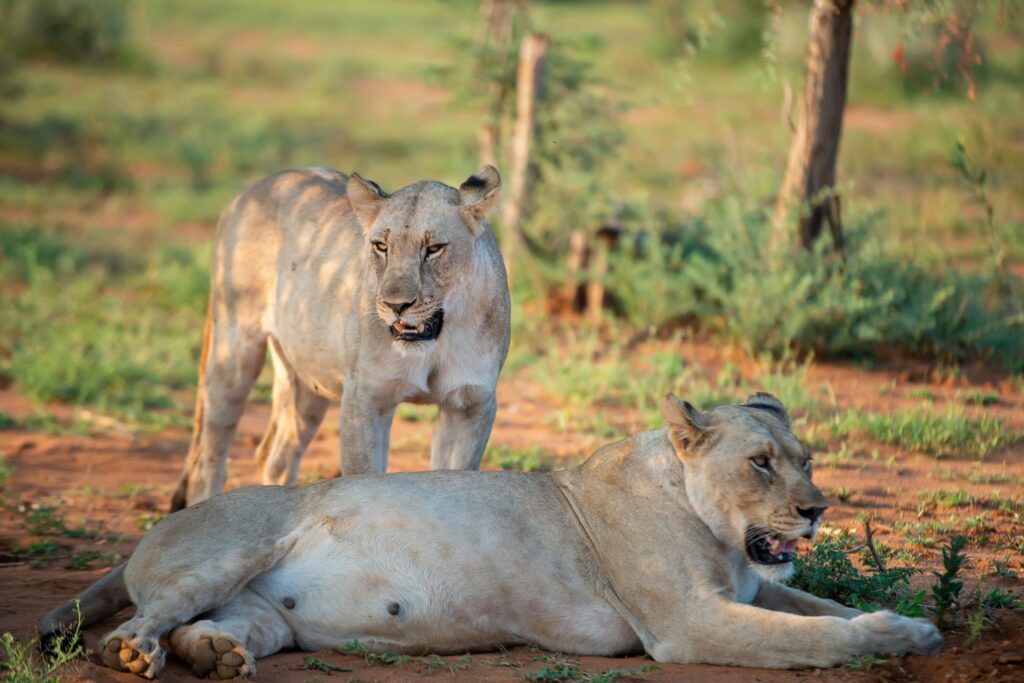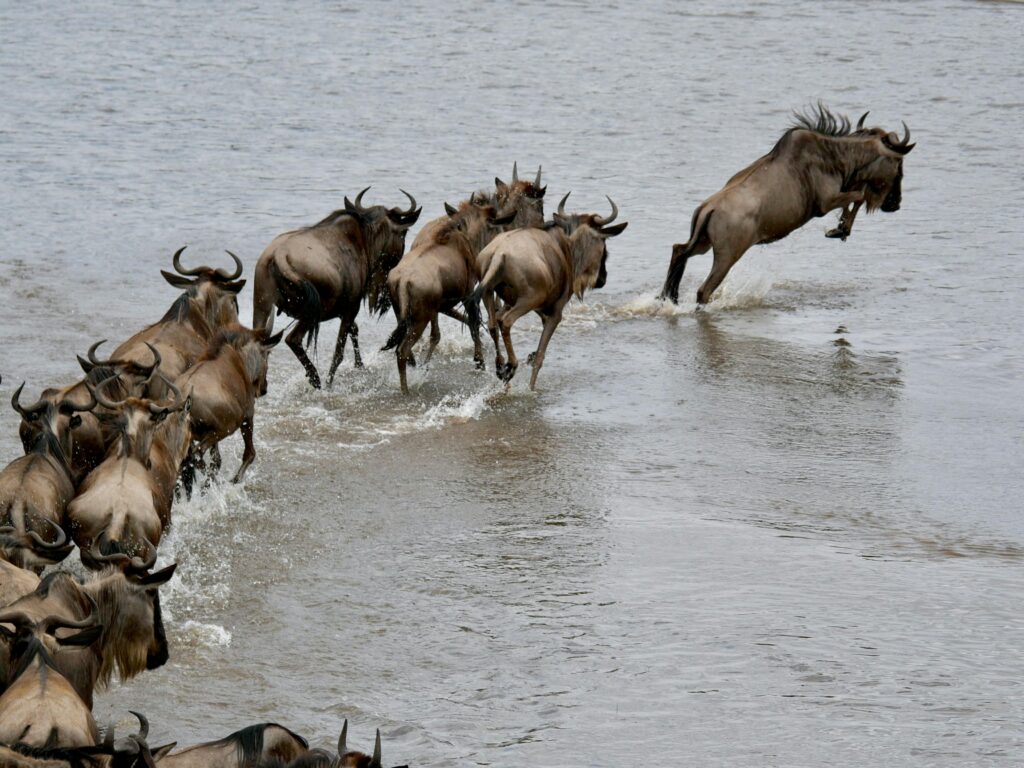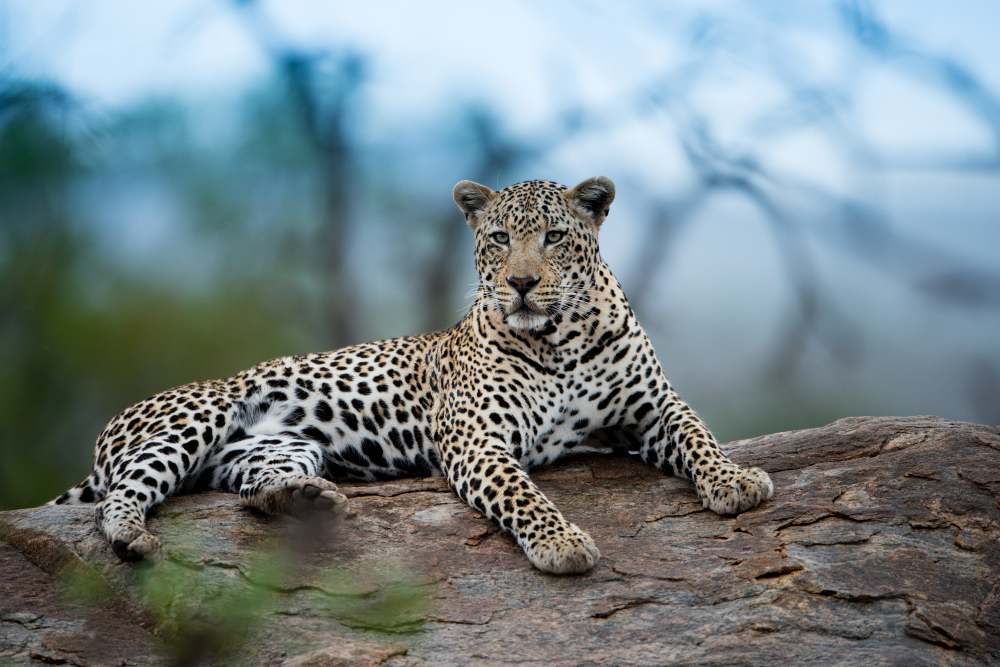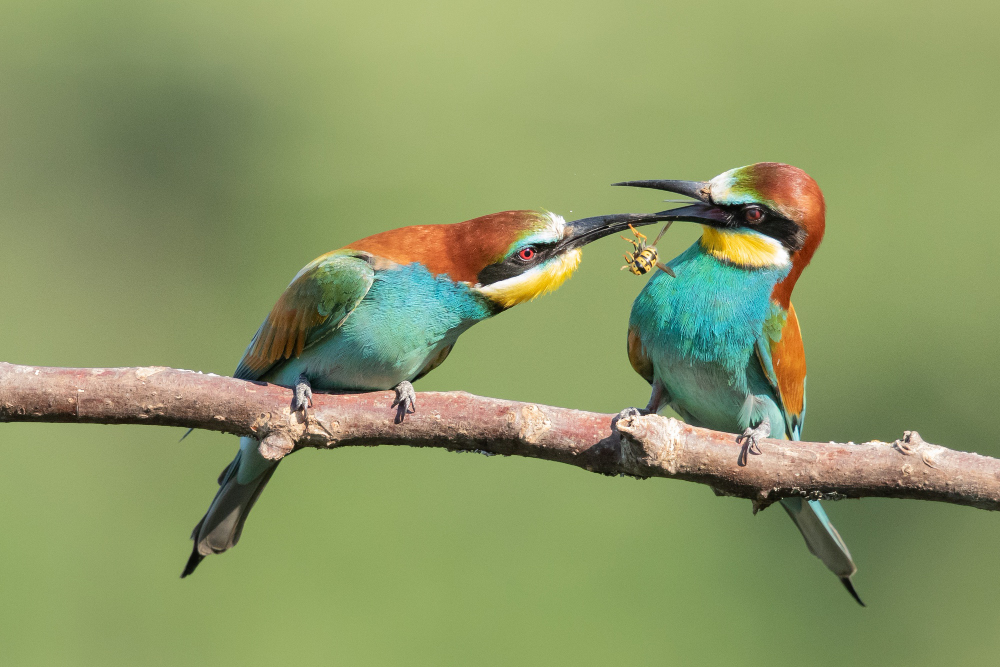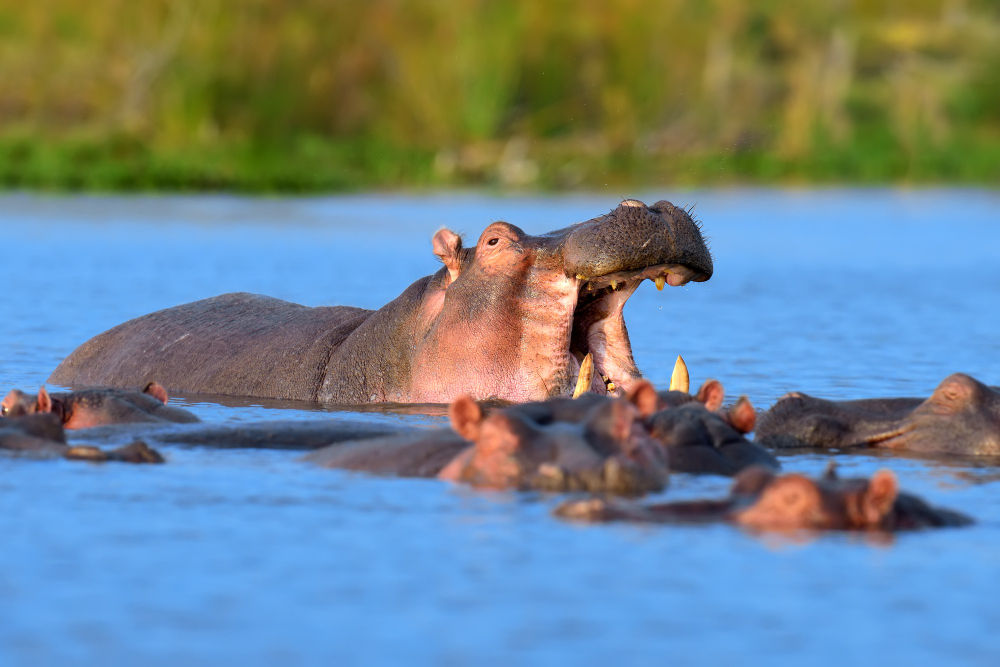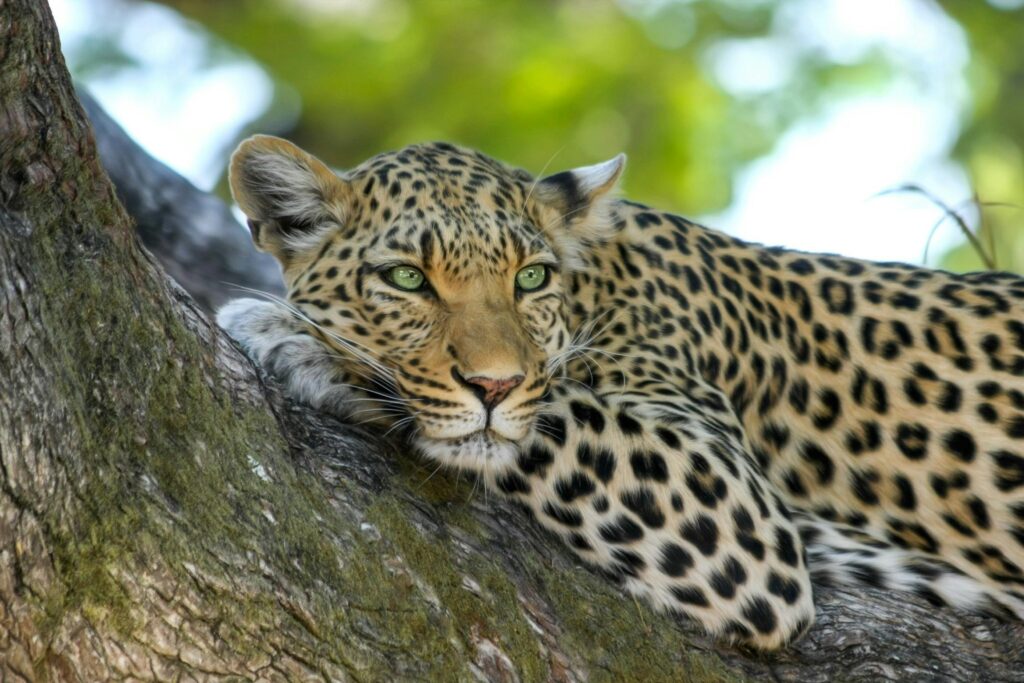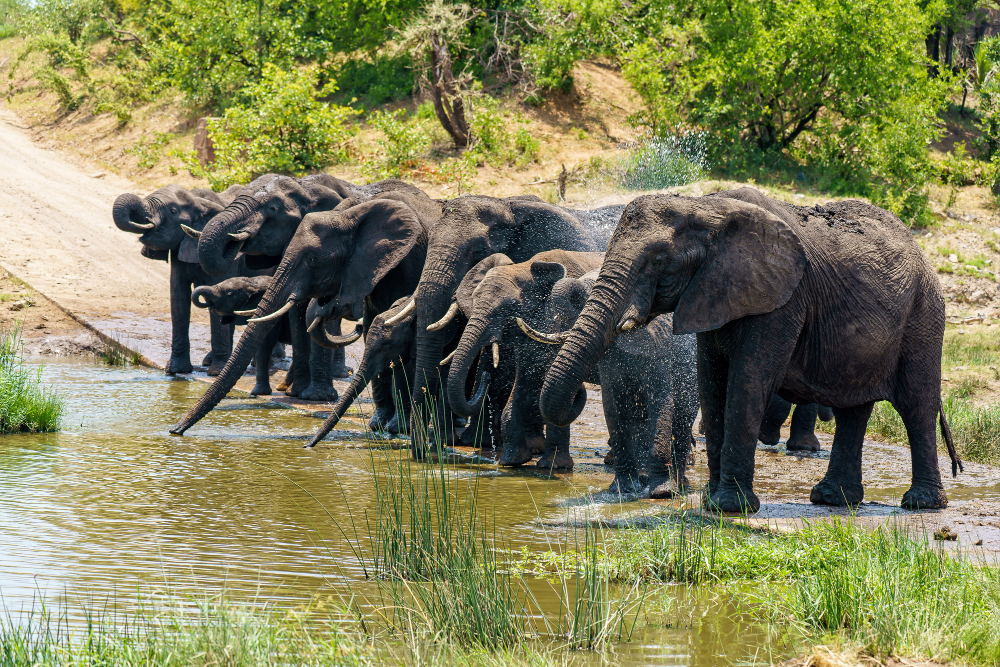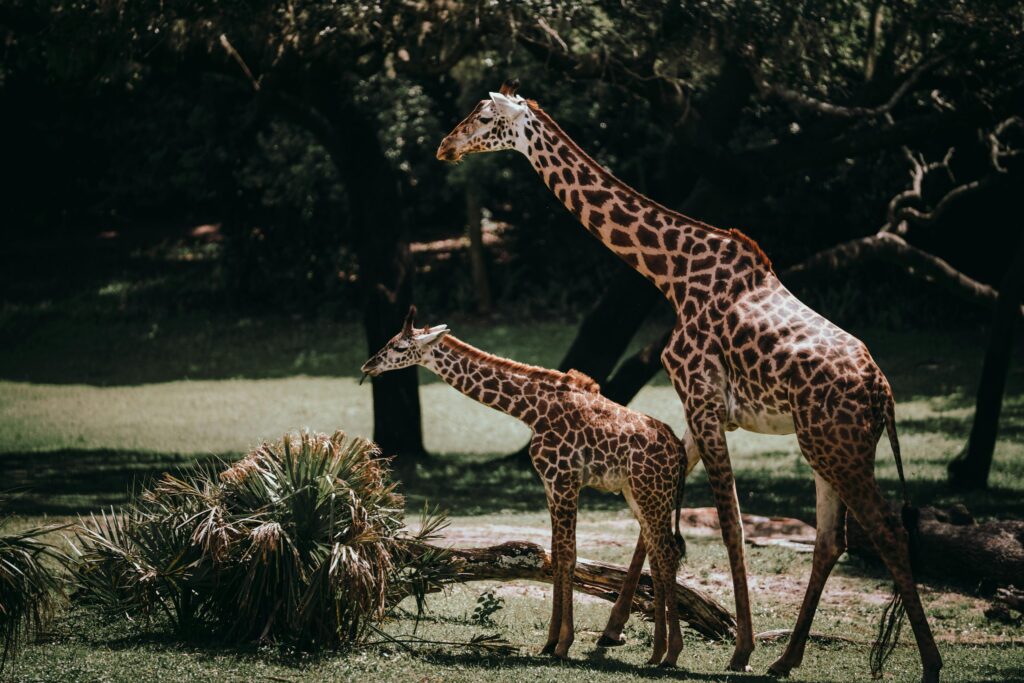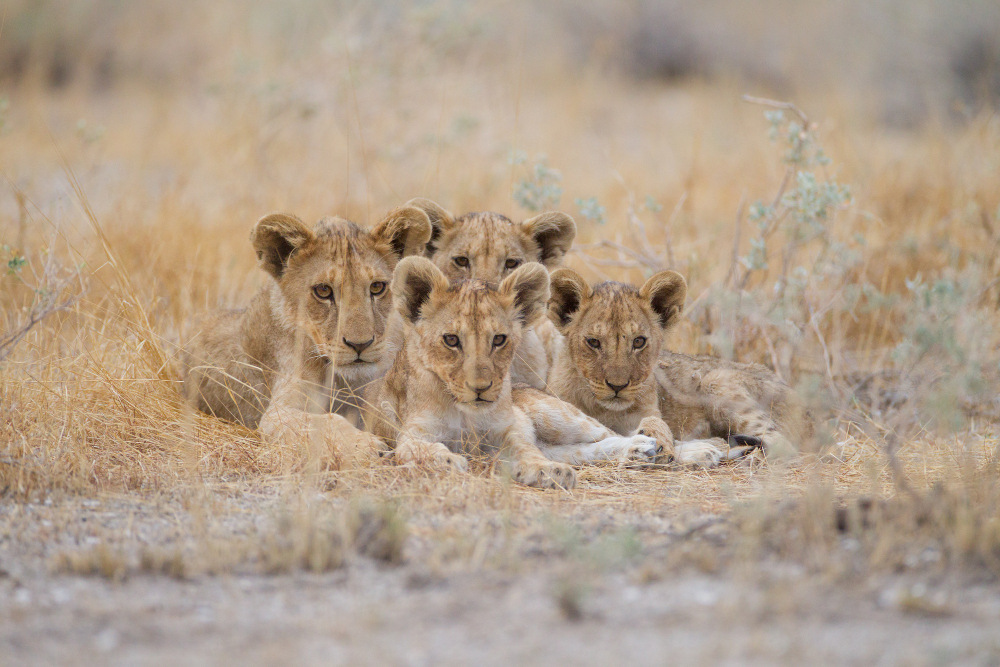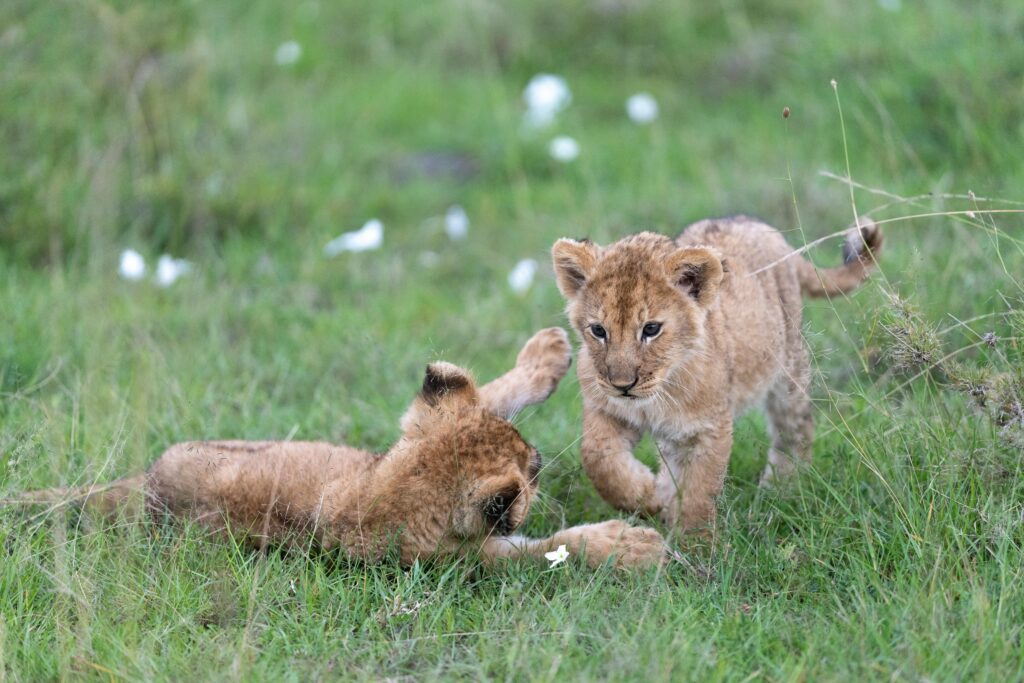Perfect 3-Day Kenya Safari Itinerary & Costs
The name “safari,” which means “journey” in the native Swahili language, originated in Kenya. Therefore, it should be no surprise that Kenya is among the top safari destinations worldwide.
Kenya offers something for every safari traveler, with its diverse range of pristine national parks and reserves, home to the renowned Big Five (lions, leopards, elephants, rhinos, and buffalo).
One of the most well-known reserves in the world, the Maasai Mara is an excellent location to see Africa’s big cats and attempt to get a glimpse of the great wildebeest migration, the second greatest terrestrial mammal migration on Earth.
Then there is Amboseli, where the last Big Tusker elephants in Africa can be seen walking before the majestic Mount Kilimanjaro.
With so much to see, you might be wondering if a 3-day Kenya itinerary will cut it?
Yes, it is feasible to enjoy a fantastic three-day safari, and it is a very popular choice.
To explore more of Kenya’s parks and reserves, I would strongly advise adding a few more days to your five-day plan if you have the time.
I would strongly advise going on a 7–10-day safari schedule if you don’t have any scheduling constraints. This lets you take your time seeing all of Kenya’s top attractions.
Different options of a 3- 3-day Kenya Itinerary
Option 1
3 Day Masai Mara Safari Itinerary
In just three days, this journey explores the greatest of the Maasai Mara. First-time tourists who wish to explore one of Africa’s most well-known safari locations favor this well-traveled path.
Since this safari is driven, you won’t have to pay for pricey internal flights. Due to the reserve’s proximity to Nairobi, transportation is usually quick, allowing you to spend more time on safari.
The Masai Mara can be a fantastic option for those on a tight budget because it offers some of Kenya’s most affordable safari lodging options.
Day 1: Maasai Tribe
Following your departure from Nairobi, you will take in breathtaking vistas of the Great Rift Valley on a 6-hour drive. Get to your lodge in time for lunch, and then spend the afternoon touring a Maasai tribe.
You will be given a guided tour of one of the Maasai tribes following lunch. You will interact with the people in a traditional Boma environment during this comprehensive cultural encounter.
Listen to the well-known chanting, learn about pastoral life, and, if you’re feeling upbeat, participate in the Maasai jumping dance. The women will display their vibrant jewelry, and if you’d like, you can purchase some mementos.
Day 2: Maasai Mara National Reserve
You will go on a full-day wildlife drive in Masai Mara National Reserve following an early breakfast. In a 4×4 vehicle, which typically has open sides and a roof that opens for excellent animal viewing, you will be traversing the Mara plains.
Using their local knowledge to predict where the wildlife will be, your guide will show you all the best places to see it.
Take a break for a picnic lunch on the banks of the Mara River with a view of a hippo pool or under the shade of an acacia tree.
You will resume your game drive in the afternoon before returning to your lodging in time for dinner at dusk.
Day 3: Maasai Mara to Nairobi
On your last game drive of the trip, you will spend the morning exploring the Masai Mara. Ask your guide if there is an animal you would especially like to see before you leave the reserve, and they will try their best to accommodate you.
To avoid paying an additional day’s admission costs, park departures often occur by 10 AM. On your route back to Nairobi, you will pass through Maasai settlements before arriving in the late afternoon.
Option 2
3-Day Great Lakes Safari Itinerary
Seeing famous lakes and volcanic landscapes in one of Kenya’s most accessible national parks, this tour offers you a new perspective on the country. Enjoy a game drive around Lake Nakuru, go on a boat safari at Lake Naivasha, see flamingos, and end the trip with a strenuous walk in Hell’s Gate National Park.
One of Kenya’s most reasonably priced 3-day safari itineraries, the journey blends modest road miles, breathtaking scenery, and a range of lodging options. It’s a fantastic option if you wish to combine the best that the nation has to offer because of its excellent highways and convenient access to wildlife.
Day 1: Lake Naivasha
After breakfast, depart Nairobi for a picturesque two-hour drive through the Rift Valley. You’ll have some free time to explore Lake Naivasha after you get there. You’ll have a lot of options because the area has a lot to offer. Take a nature walk with a local guide, go horseback riding in a nearby conservancy, or visit a flower farm and stroll among the flowers.
You will take a boat safari around Lake Naivasha after lunch. The local fauna, which frequently gathers near the water’s edge, is best viewed in this manner. Pelicans and fish eagle
Visit Crescent Island, where a protected game refuge is located. The animals were left stranded after the peninsula was severed by rising water levels, which had formerly connected the island to the mainland. You’ll have a better chance of seeing a variety of species when you explore with a native guide, including buffalo, giraffes, wildebeest, and bushbucks.
Day 2: Lake Nakuru
After breakfast, you’ll leave Naivasha and travel for 1.5 hours to Lake Nakuru, where you’ll spend the remainder of the day touring the national park.
Take a guided game drive through the savannah to start your experience, looking for black and white rhinos. Here, lions, waterbucks, and leopards also wander. See if you can find the hippos lounging in the shallows as you conclude your journey down the lakeshore.
On the southwest side of the lake, have a picnic lunch at the Out of Africa overlook.
Choose from a variety of afternoon activities following your outdoor feast. Visit the Hyrax Hill Prehistoric Site, which is a short drive from the town, climb to Makalia Falls, or have a horseback ride around the park’s edge.
Day 3: Hell’s Gate National Park
You will have a lovely two-hour journey from Lake Nakuru to Hell’s Gate National Park this morning. You have a variety of adventurous activities to select from when you arrive, allowing you to explore at your leisure.
Because hikers are free to move over the entire park, frequently alongside giraffes and zebras, hiking is very popular. A guide is required, but they will help you get the most out of your trip. Local companies also offer rock climbing vacations, with routes for more experienced climbers that tackle the towering cliffs.
You can rent bikes at Elsa’s Gate if you want to explore on two wheels. Hell’s Gate Gorge is a picturesque 9-kilometer descent from here. Hiking in the gorge and then cycling upward back to the gate are part of the half-day tour. This one requires a reasonable degree of fitness.
After your hard work, take a dip in the Olkaria Geothermal Spa’s geothermal pools before making the two-hour drive back to Nairobi.
Option 3
3-Day Eastern National Parks Safari Itinerary
In just three days, this incredible Kenya safari itinerary covers a lot of ground. You will have the opportunity to see some of Africa’s most breathtaking vistas, tour the contrasting national parks of Amboseli and Tsavo West, and cross off the Big Five.
This simple tour is ideal for the classic safari experience because of the large herds of elephants and the views of Kilimanjaro.
Day 1: Tsavo West National Park
Before heading south from Nairobi via the Nairobi-Mombasa Highway to Tsavo West National Park, get ready for an early start. The journey through Masai territory is picturesque, with traditional homesteads and cattle herds scattered along the roughly five-hour journey.
After checking into your lodging and refueling with lunch, you can go on a game drive in the afternoon. Elephants with some of the largest tusks in the world are known as mega tuskers, and you may spot them as you plod across the plains in the open-sided safari vehicle.
A leopard may be spotted lounging in the woods further along the riverine forests. You can see everything from buffalo to lions here because the majority of the wildlife is concentrated near the river during the dry season.
Day 2: Amboseli National Park
Get up early to see the dawn over the park if you’re staying at a lodge in Tsavo West. Following breakfast, you will take your time driving up to Amboseli, which is only a few hours away.
Take a rest at Mzima Springs, a naturally occurring water feature that draws animals from all across the plains. Hippos and crocodiles can be found there as well. With your guide, you can take a quick nature walk along the route by the pools to get your legs stretched.
After there, Amboseli is the next stop, and Mount Kilimanjaro is growing closer by the minute. After checking into your lodging, go on a game drive in the afternoon. Here, one can frequently see a variety of animals, including buffalo, jackals, hyenas, and the well-known Amboseli elephants.
Day 3: Amboseli to Nairobi
For a final game drive in Amboseli, get up early and see the sun rise over the park, illuminating the plains with color. Since the animals are most active around this time, there’s a strong possibility you’ll see some unusual creatures, such as cheetahs or elephants. Enjoy breakfast in the wilderness while taking in the scenery.
You have a good possibility of witnessing the massive herds of elephants crossing the road in front of you as they make their daily trek to cool off. The elephant herds travel from the woods beneath Kilimanjaro to the wetlands in the park’s center, usually between 7 and 8 am.
After a 5-hour drive back to Nairobi, you will finally depart from Amboseli. You will reach the capital late in the afternoon, just in time for an evening flight or a city stay.
Itinerary Cost
For a private budget safari for two people, budget about $300 per person per day for this three-day Kenya safari itinerary. The number of people attending the game drives and the type of lodging you select affect the cost.
If you want to see the Big Five but don’t want to pay $200 per person per day for park admission, this itinerary is a wonderful choice because Amboseli and Tsavo West are far less expensive than the Masai Mara.
Do you want to minimize expenses? Although most visitors prefer to travel with a guide to increase their chances of seeing wildlife—after all, the natives know best—self-drive safaris are feasible in Amboseli. When traveling alone, don’t forget to account for the park.
Travel outside of these periods to save money because lodging costs are higher during the busiest months of June through October. Aim for the shoulder months if you want a less expensive safari because several locations close during the wet seasons, which are April to May and November to December.
Option 4
3-Day Amboseli Safari Itinerary
You will be traveling through the center of one of Kenya’s most well-known parks on your safari excursion. It’s the ideal location for those classic wildlife encounters, and Mount Kilimanjaro makes for breathtaking scenery.
To learn about traditional Maasai culture and community, you will visit a nearby hamlet and take part in several game drives. For anyone who would rather spend more time in one location rather than traveling huge distances, this 3-day Kenya safari is excellent. For first-time safari visitors who like to view as many animals as possible in a stunning plains environment, it’s the ideal choice.
Day 1: Amboseli National Park
After breakfast, leave Nairobi for the five-hour trip to Amboseli. After checking into your lodge, you will have time to have lunch at the national park.
You will accompany a local guide for a game drive in the national park in the afternoon. Ask if there is something in particular you would like to see. Along the journey, you can learn basic tracking methods, and the guides are frequently delighted to try and locate certain species.
Seeing massive herds of elephants roaming the savannah while Mount Kilimanjaro watches in the distance may be the highlight of the drive. Every day at approximately 5 p.m., this show usually occurs when the elephants make their way from the marshes in the park’s center to the forests underneath Kilimanjaro.
During the peak of the dry season, you will also spend time in the waterholes, where a lot of animals gather.
Day 2: Amboseli National Park
After a filling breakfast, venture into the bush as your reliable guide scouts the day’s top animal locations. Along with many other animals, one may come across lions, giraffes, buffalo, and, of course, elephants.
As part of the day’s safari activities, some operators include a nature walk just outside the national park; if you would like to participate, please inquire in advance. This is a fantastic approach to have a closer look at nature and see the wild in its most unadulterated state.
Savor an outdoor bush lunch on Observation Hill while taking in views of Mount Kilimanjaro and possibly some distant plains wildlife grazing. This is an excellent opportunity to share tales with your guide and gain a deeper understanding of their culture and community. They will occasionally share terrifying stories about their interactions with wildlife!
Drive around the plains and along the banks of the rivers in the afternoon to look for animals, who might be sleeping in the shade from the heat. After that, it’s time to head back to your resort for dinner and sundowners.
Day 3: Maasai Tribe & Drive to Nairobi
Following your last meal in Amboseli, you will go to one of the Maasai settlements located close to the national park’s edge. In addition to walking through the village with a local warrior who will share stories and educate you about the way of life in this isolated area, this is your opportunity to learn more about Maasai civilization.
A Maasai visit offers a singular chance to engage with tribe members, try milking cows, and even purchase memento jewelry to bring home. Songs and dances will be performed to greet you; feel free to join in if you’d like.
When your tour of the village is over, you’ll get back in your 4×4 and head back to Nairobi. Depending on traffic, the trip takes about five hours, so you’ll return to the city in the afternoon.
Option 5
3-Day Kenya Highlights Fly-In Safari Itinerary
The Masai Mara and Amboseli, two of Kenya’s top wildlife locations, are included in this 3-day safari itinerary. Since this is a fly-in safari, you will take an airplane to get from one place to another.
Although fly-in safaris cost more than road-based itineraries, you can spend more time in the parks because of the shorter travel time. Additionally, you will have the opportunity to view Kenya’s diverse landscapes from above, which will enhance your journey even more.
Day 1: Masai Mara National Reserve
An exciting internal flight from Nairobi Wilson Airport to Masai Mara National Reserve kicks off your journey. It will feel like a very exclusive experience because you will be traveling in a small aircraft, usually a Cessna Caravan, with only a few other people. You have plenty of opportunities to take in the view and snap pictures from the windows throughout the hour-long journey.
There are multiple bush airstrips in the Masai Mara; you will land at the one nearest your resort. Similar to a bus, your jet may make multiple stops so that other passengers can board and disembark. The pilot will indicate who must alight at each location, so don’t worry.
After picking you up at the strip, your driving guide will take you through the reserve to your lodging. The trip is like having an extra safari because you may come across several animals.
Before going on an afternoon game drive, you will have the opportunity to explore the lodge and eat lunch after checking in. You will travel in an open-sided safari vehicle, which provides you with the ideal position to observe wildlife. Whether it’s a herd of elephants, a clan of hyenas, or a pride of lions and their young, your guide will make every effort to locate the creatures you are most interested in seeing.
Day 2: Masai Mara to Amboseli
Enjoy another game drive in the Masai Mara to start the day off right. You never know what you could encounter because animals are most active in the mornings. Interested in seeing a cheetah? Your guide will try their best to find one if you let them know.
When you arrive at the airstrip, your guide will drive you to board another bush plane for the one-hour flight to Amboseli. On the trip, keep your camera close at hand for overhead photos of Mount Kilimanjaro and the Great Rift Valley.
You will be picked up from the airport and taken to your lodging when you arrive in Amboseli. Exploring the national park is the main focus of the day, with game drives bringing you far into the forest to look for wildlife.
Day 3: Amboseli National Park
To enjoy the comforts of your safari vehicle while watching the sun rise over the savannah, you and your guide will leave early for the national park. To cross off a few more animal sightings, you will tour the plains, swamps, and woods as the bush gradually warms up.
After that, it’s time to return to the airport in preparation for your flight to Nairobi. You will arrive in the early afternoon because the trip to the city just takes an hour.
You’ll have some time to explore Nairobi if you don’t have an additional flight. Visit the Karen Blixen Museum to learn the true “Out of Africa” tale, browse the Village Market for trinkets, or dine at one of the lively eateries in the city.
Is 3 Days Enough in Kenya?
Yes, you can have a fantastic three-day safari in Kenya.
A 7–10 Kenya safari itinerary, however, is the best way to see the animals and scenery of this stunning East African nation if time and money permit. After your safari, would you like to spend some time at the beach or possibly go to Zanzibar? Then, a two-week schedule that includes Kenya and Tanzania is the best course of action.
You may still see and do a lot in just three days, though, if you have a strict budget or little free time. A three-day road trip is both manageable and exciting due to the abundance of wildlife in Kenya’s most well-known parks and the short driving distance between Nairobi and locations like Lake Naivasha and Tsavo West.
How to Book a 3-Day Safari Itinerary in Kenya?
Local Kenya Safari Companies
It’s advisable to reserve your trip through a local safari operator for the best prices and local knowledge. They frequently have exclusive deals with hotels and lodges that allow them to provide cheaper prices than the general public, and the savings are always passed on to you. With profit margins typically of 15% or less, they also lack the significant overheads of foreign agencies, which keeps costs down and gives you better value.
Because of the vast local communication networks, these businesses are well-informed and have access to the most recent information regarding animal viewing. Going local is the greatest option if you’re eager to witness the Great Migration.
As it should be, making your reservation through a local safari business also helps Kenyan communities directly. Because some operators are better than others, make sure to read other travelers’ reviews.
International Travel Agents
Booking your safari through a reputable international travel agency situated in your home country may make you feel more at ease. In addition to providing purchase protection and organizing your overseas travel, they can handle any kind of vacation request that a local operator would not be able to fulfill.
However, keep in mind that foreign brokers typically tack on a substantial charge (up to 300%) to the local operator rates, which means you’ll pay extra.
Since these agents typically contract out their safaris to local businesses, you might as well make your reservation with the Kenyan operator to save money. Eliminating the “middle man” will also allow you to communicate with the individuals planning your safari directly, which may improve operations.
Private vs Group Kenya 3-day Safaris
Private Kenya safaris
Scheduling a private tour is the best way to enjoy a Kenya safari. When you have an exclusive car and driver handbook, this is particularly crucial for the game driving component. Your guide will make it their goal to find a leopard if you’re itching to see one for the first time. Your safari will be customized to your interests.
You won’t have to wait for other travelers who could be late leaving their hotels in the mornings if you have your safari truck. If you’re having an especially thrilling wildlife encounter on a private safari, the guides may be more willing to stay in the bush a little later than usual.
Having your place is an additional advantage of private Kenya safaris. Making reservations for exclusive game drives is essential if you’re not very outgoing and don’t want to spend a lot of time with the other lodge visitors every day. Additionally, you won’t have to share the best seats in the safari van; you can sit wherever you wish.
Group or shared safaris
Apart from the apparent financial advantage, group safaris offer additional benefits. These kinds of vacations are social events, frequently featuring group dinners that allow you to get to know your fellow travelers rather well.
Joining a game drive with other travelers facilitates the development of relationships via shared experiences, transforming the entire trip into a vacation with friends.
Naturally, this may go both ways, and it may feel a little strange if you don’t have many interests with the other visitors. But the reason you’re all here is to see the animals, who always steal the show.
Due to the significant cost savings and opportunity to network with other travelers, group safaris are especially fantastic for lone travelers.
How Much Does a 3-day Kenya Safari Itinerary Cost?
Although they are expensive, safaris are rewarding and frequently regarded as a once-in-a-lifetime opportunity. One of the greatest safari destinations in Africa is Kenya, where a trip can frequently be less expensive than a comparable vacation in Tanzania or Botswana; however, the difference is narrowing as a result of increased park fees.
The price of a Kenya safari varies significantly based on the type of lodging you select. In Kenya, the average cost of a private safari is approximately $300 per person per day for a low-cost trip, $400 for a mid-range tour, and $600 for a luxury one. Full board lodging, special game drives, park admission, car, guide, and taxes are all included in these all-inclusive rates.
If you choose a less expensive option, you can save up to 27% by scheduling a shared safari instead of a private one. Based on shared game drives and inexpensive camping with common restrooms, these group safaris start at about $220 per person per day. Since single extras on private safaris may be highly costly, this is a fantastic choice if you’re traveling alone.
When choosing your safari site, keep in mind that national park fees might make up as much as 30% of the total cost. While some parks are more costly than others, admission to the Mara is the most expensive. Reducing the number of days spent in the park or selecting an alternative reserve with lower admission costs are two ways to save money.
The pricing varies throughout the seasons as well. Safari rates are at their highest during the dry season, which runs from June to October. This is especially true if you’re visiting during the Great Migration in July or August.
With cheaper prices, fewer tourists, and more unexpected experiences, traveling to Kenya in the shoulder months of January, February, November, and December can be a wise compromise. During the rainy season, several locations stay open, but keep in mind that transport becomes more challenging and occasionally impossible. This isn’t the ideal time of year for a safari because it’s much tougher to see animals.
Road-based tours are less expensive, but if you have the extra cash, fly-in safaris skip the lengthy drives and offer an exciting aerial view of Kenya. For a single peak season trip, flights can cost anywhere from $200 to $420 per person, which can add up, particularly if you’re visiting multiple parks.
While self-drive safaris are less expensive than utilizing a local operator, they are available in several of Kenya’s national parks (except the Masai Mara, where self-driving is prohibited as of June 2024). A driver’s guide, on the other hand, is not that expensive and will provide a more comfortable, secure, and animal-spotting experience.
Kenya Safari Tips & Tricks
Keep in mind that you usually get what you pay for while going on a safari in Kenya. Booking a low-cost trip may save you money, but the quality of the safari vehicle and lodging will suffer as a result. Minibuses are frequently used by less expensive operators in place of open-sided 4x4s, which makes wildlife viewing more difficult and less pleasurable. Make sure you understand what you’re getting into if this is essential to you.
Most airlines have a stringent baggage weight limit of 15 kilograms for domestic flights, and Safarilink and Air Kenya are no exception. Therefore, utilize soft-sided bags instead of hard cases and pack light.
While on safari, do you need to do any laundry? The majority of lodges provide this service, but be in mind that some may not wash women’s underwear due to cultural differences, so pack your underwear carefully!
Any three-day Kenya safari must include a Maasai cultural encounter, but choosing the correct one is crucial. Make sure to let your operator know that you’re seeking a more immersed experience away from the major tourist attractions, because some trips feel overly marketed and unauthentic.

